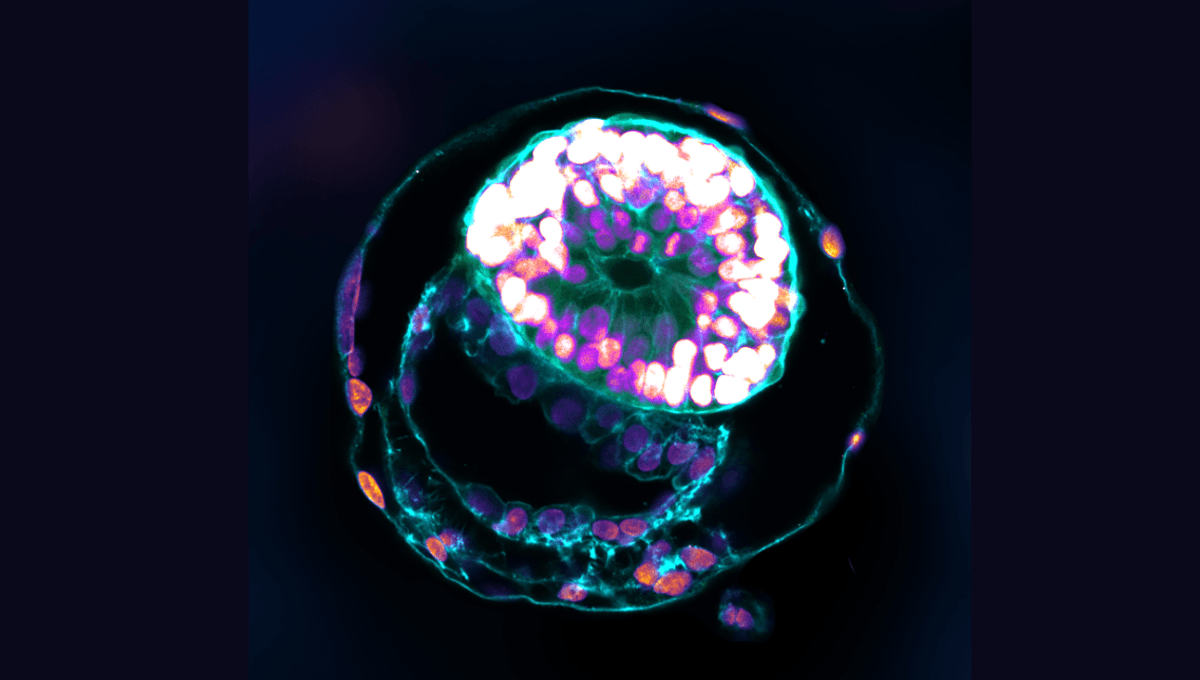Prepare to be amazed! Scientists from the Weizmann Institute of Science in Israel have taken the creation of synthetic embryo-like models to a whole new level. While other teams have made progress in this field, the models developed by the Weizmann Institute have a remarkably complex and self-organized structure.
What’s the purpose of this groundbreaking research? Well, it aims to shed light on a crucial stage of embryo development called gastrulation, which occurs a few weeks after conception. Unfortunately, scientists have very limited knowledge about this stage because the microscopic embryo is hidden in the womb at that time.
Professor Jacob Hanna, the leader of the project at the Weizmann Institute of Science, explains, “The drama is in the first month, the remaining eight months of pregnancy are mainly lots of growth.” He adds, “But that first month is still largely a black box. Our stem cell–derived human embryo model offers an ethical and accessible way of peering into this box. It closely mimics the development of a real human embryo, particularly the emergence of its exquisitely fine architecture.”

Similar to previous studies, these embryo models were not created using sperm, fertilized eggs, or a uterus. Instead, the researchers successfully guided human stem cells to organize themselves into synthetic embryo-like models that closely resemble the real thing.
Building on their previous work with mouse embryos, the team used pluripotent stem cells, which are versatile cells capable of differentiating into various cell types. By reverting these cells to an earlier “naive” state, they were able to produce self-assembling models that faithfully replicated the 3D architecture and key developmental landmarks of human embryos from 7 to 14 days after fertilization.
Professor Hanna explains, “An embryo is self-driven by definition; we don’t need to tell it what to do – we must only unleash its internally encoded potential. It’s critical to mix in the right kinds of cells at the beginning, which can only be derived from naïve stem cells that have no developmental restrictions. Once you do that, the embryo-like model itself says, ‘Go!'”
What sets this research apart is that the model human embryos contain essential cell types crucial to the embryo’s development, such as those forming the placenta and the chorionic sac. Previous attempts lacked these key components.
Experts in the field are excited about the potential of these advanced embryo-like models for scientific research. However, they also acknowledge that the increased complexity raises ethical dilemmas.
Professor Alfonso Martinez Arias, an ICREA Senior Research Professor at Pompeu Fabra University in Spain, comments, “The system reproduces the natural situation remarkably well, unlike all the other reports that have appeared during the summer. This is a landmark study that opens up new avenues for research into human development and the study of several aspects of fertility and disease.”
He adds, “I expect the work to raise ethical issues but, unlike earlier claims, this time with a real basis to think about the questions that emerge.”
If you’re eager to learn more about this groundbreaking research, check out the study published in the journal Nature.








